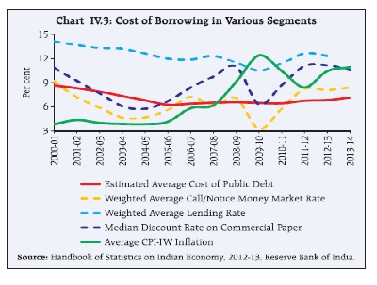One of the themes that I have regularly explored in The Daily Reckoning newsletters is the mess that the Indian banking sector currently is in. This newsletter is another one in the series.
The RBI Financial Stability Report released in June earlier this year pointed out: “Five sub-sectors, namely, mining, iron & steel, textiles, infrastructure and aviation, which together constituted 24.8 per cent of the total advances of scheduled commercial banks, had a much larger share of 51.1 per cent in the total stressed advances. Among these five sectors, infrastructure and iron & steel had a significant contribution in total stressed advances accounting for nearly 40 per cent of the total.”
Within the infrastructure sector, the power sector is a big defaulter. Loans to the power sector form around 8.3% of the total loans. But at the same time they form around 16.1% of the stressed advances.
The stressed advances or loans are arrived at by adding the gross non-performing assets (or bad loans) plus restructured loans divided by the total assets held by the Indian banking system. The borrower has either stopped to repay this loan or the loan has been restructured, where the borrower has been allowed easier terms to repay the loan by increasing the tenure of the loan or lowering the interest rate.
So what would typically happen in such a scenario? Banks would go slow on lending to sectors that have been defaulting on their loans. But is that really the case? The sectoral deployment of credit data released by the Reserve Bank of India (RBI) earlier this month suggests otherwise. This despite the fact that banks claim every quarter that they continue to stay away from the sectors that have given them pain in the past.
People may not always tell the right story but numbers do. And here are the numbers. The RBI sectoral deployment data suggests that between July 2014 and July 2015 banks lent a total of Rs 1,20,900 crore to industry as a whole. The lending to industry went up by 4.8%, in comparison to 10.2% growth between July 2013 and July 2014.
The situation gets even more interesting when we take a closer look at the numbers. The bank lending to the infrastructure sector between July 2014 and July 2015 grew by Rs 71,600 crore. Within the infrastructure sector lending to the power sector grew by Rs 59,400 crore.
Lending to the iron and steel sector grew by Rs 27,100 crore during the course of the year. Loans to the iron and steel sector form around 4.5% of the total loans and 10.2% of the total stressed advances.
What does this tell us? In the last one year banks gave Rs 98,700 crore of the Rs 1,20,900 crore that they lent to industry to the two most troubled sectors of infrastructure and iron and steel. This means that 81.6% of all industrial lending carried out by banks in the last one year went to the two most troubled sectors of infrastructure and iron and steel.
These sectors form around 19.5% of the total lending carried out by banks and 40% of their stressed assets. The overenthusiasm of banks to lend to these sectors comes even after the RBI in the Financial Stability Report had raised a red flag.
The report had warned that the “the debt servicing ability of power generation companies[which are a part of the infrastructure sector] in the near-term may continue to remain weak given the high leverage and weak cash flows. Banks, therefore, need to exercise adequate caution while dealing with the sector and need to continue monitoring the developments very closely.”
With regard to the iron and steel sector the report had said that “the sector holds very good long term prospects, though it is currently under stress, necessitating a close watch by lenders.” But the July numbers on the sectoral deployment of credit clearly suggest that banks are not listening to the RBI.
What does this really mean? By lending more and more money to sectors which are in trouble, banks are essentially kicking the can down the road.
The banks are giving new loans to companies operating in these troubled sectors so that they can repay their old loans. They are effectively running a Ponzi scheme. A Ponzi scheme is essentially a fraudulent investment scheme where money being brought in by new investors is used to pay off old investors.
Over and above this conversations I have had with some industry insiders I have come to know that banks(in particular public sector banks) have been using the 5/25 scheme in order to postpone dealing with the bad loans issue, in the hope that these loans will become viable in the years to come.
The 5/25 scheme allows banks to extend the loans given to infrastructure projects to up to 25 years while refinancing them every five to seven years. As a December 2014 newsreport in the Mint newspaper points out: “Banks were typically not lending beyond 10-12 years. As a result, cash flows of infrastructure firms were stretched as they tried to meet shorter repayment schedules.”
In fact when the scheme was first introduced it was available only for new projects. However, in December 2014, it was also extended to existing projects as well. Banks were allowed to increase the repayment tenure for companies which had borrowed money for infrastructure projects and come up with fresh amortisation schedules for repayment of loans.
Such an increase in the tenure of repayment would not be treated as a restructuring of assets. An increase in tenure brought down the amount of money that the companies had to pay during the course of a year, in order to repay the loan. And this increased their chances of continuing to repay the loan.
This 5/25 scheme is also available for projects lending against which has already been classified as a restructured asset (i.e. its repayment schedule has already been extended or the interest rate has been lowered). When such a loan is brought under the 5/25 scheme it continues to be classified as a restructured asset up until the project gets upgraded on the satisfactory servicing of the loan.
RBI’s rationale behind extending the 5/25 scheme to existing projects was that that instead of giving up on an asset under stress, if efforts were made to make it viable, then the loan could be paid back and therefore the pressure of bad loans could be eased.
As RBI governor Raghuram Rajan said on August 4, 2015, while addressing a press conference: “We have said that there is no problem to lend to a project even if it is a non-performing asset, so long as it has done something to bring the project back on track and not for evergreening the loan.” But is that really the way banks also look at it?
Rajan further said in a speech on August 24, 2015: “To deal with genuine problems of poor structuring, it has allowed bankers to stretch repayment profiles…to infrastructure and the core sector (the so-called “5/25” rule), provided the project has reached commercial take-off, has a genuinely long commercial life, and the value of the NPV of loans is maintained. RBI is undertaking periodic examination of randomly selected “5/25” deals to ensure they are facilitating genuine adjustment rather than becoming a back-door means of postponing principal payments indefinitely.”
I sincerely hope that RBI is carefully examining the 5/25 loans. As Rajan said, the RBI making it “easy for banks to “extend and pretend”, is not a solution.” I agree.
The column originally appeared in The Daily Reckoning on Sep 11, 2015





